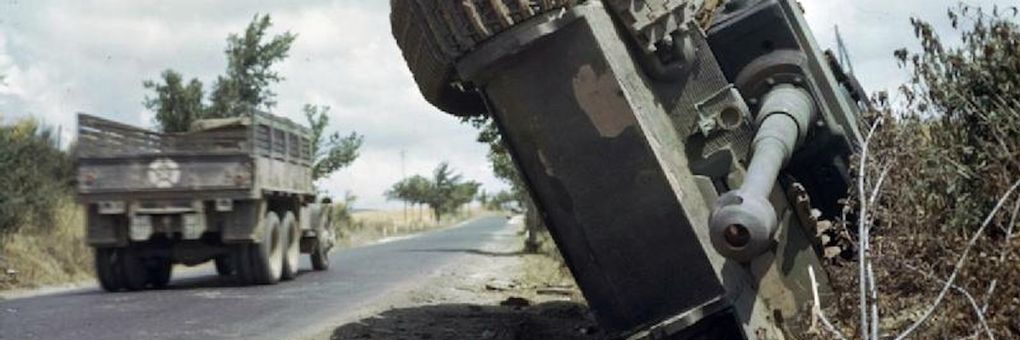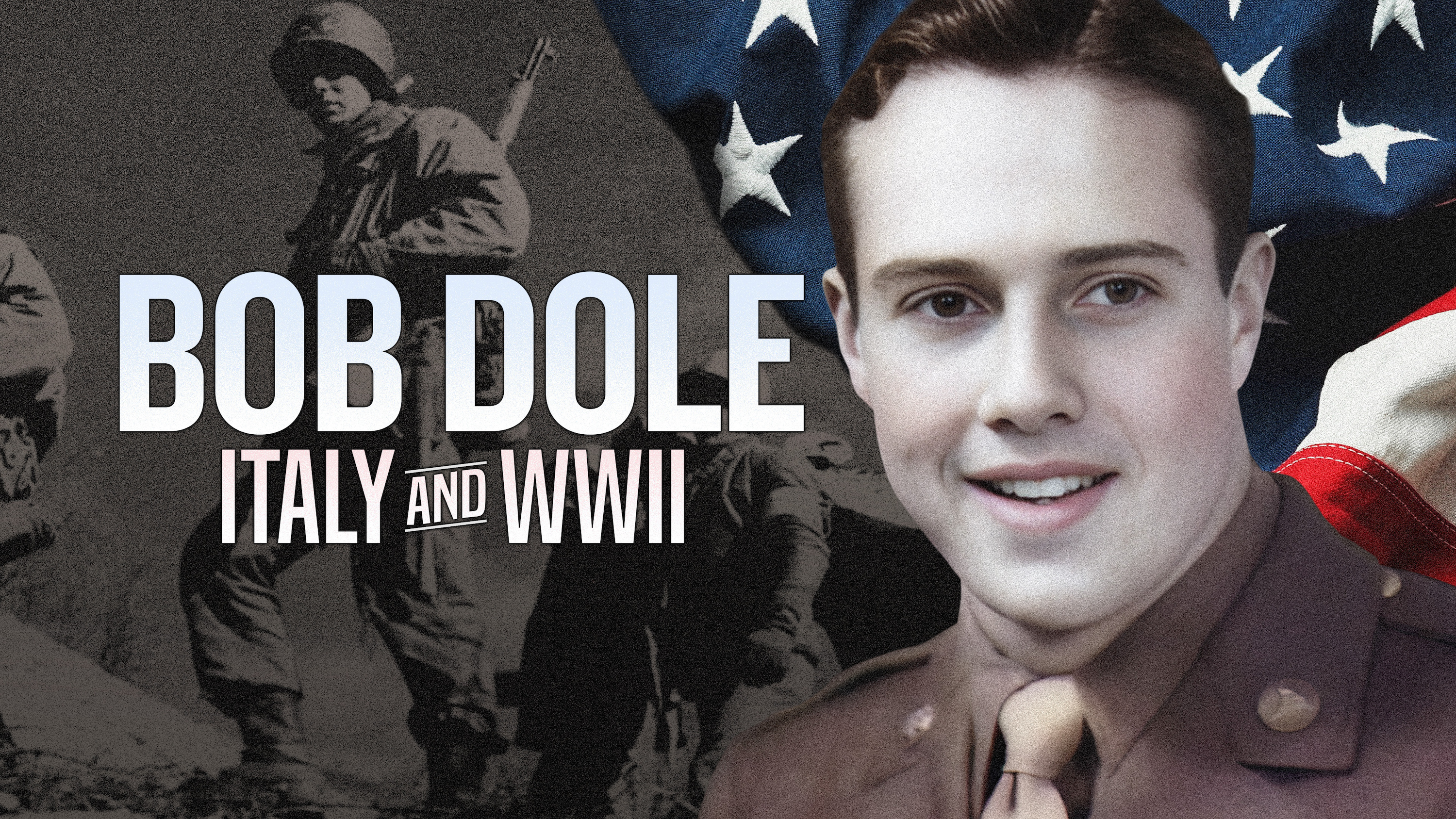Americans took Rome midway through the Italian campaign, but for almost two years there was no relief from the grueling deadly fighting.
◊
The European War was almost over in April 1945, but the Allied armies were still locked in a fierce battle with German troops in the rugged mountains of northern Italy. To understand why this long campaign was still underway, we have to look at both military and political points of view.
For Adolf Hitler, it was a matter of salvaging the botched military efforts of his fascist ally, Benito Mussolini. Il Duce, as he was called, did little to sustain incursions into areas of the Mediterranean that promised replacing European monarchical imperialism with fascist imperialism. For the United Kingdom and its allies, the mission was keeping the British Empire intact while aiding its regional allies. And for the United States, once involved, it was a complicated, sometimes frustrating and deadly but necessary step in the goal to defeat Germany.
When the Axis powers went to war, Italy tried to improve its territorial positions in North Africa, particularly from Libya, its best base to launch military actions. Mussolini invaded Egypt, where the British had armed forces to protect the Suez Canal. The British fought back and only the arrival of Erwin Rommel and the famed Afrika Korps prevented British troops from advancing into Libya. Mussolini also launched a poorly conceived invasion of Greece and the Balkan States which, when met by U.K. and Commonwealth forces, once again caused the Wehrmacht to intervene.
This compelling MagellanTV documentary tells the harrowing story of an American hero's sacrifice during the final days of World War II.
Anglo-American Strategic Plans
In December 1941, when the United States became fully involved in World War II, a series of British and American military strategy conferences began. U.S. military leaders, led by General George C. Marshall (soon to be Army Chief of Staff) and Major General Dwight D. Eisenhower (head of U.S. Army planning) concluded that invading the northern European continent and sustaining a determined drive on Germany was the way to success. Winston Churchill, with an eye on preserving the British Empire, pushed for exploiting the “soft underbelly” of the Third Reich, meaning the Mediterranean. The Americans thought this to be a bad idea – a distraction from balancing their European strategy with the threat caused by Japan romping through Asia and the Pacific in early 1942. But soon, with political pressure to put U.S. troops on the line against Germany, President Franklin D. Roosevelt ordered a U.S. invasion of North Africa.
Formed in December 1941, the Combined Chiefs of Staff, American and British administrative officers, met continuously in Washington to plan Allied war strategies.
The Americans struggled initially in the North African campaign, Operation Torch, which began in November 1942. Thanks to adjustments made by Major General George S. Patton and others, and aided by a push from the east led by the British Eighth Army under Lieutenant General Bernard Montgomery and regional Allied commander General Sir Harold R. L. G. Alexander, the Afrika Korps was crushed, though not completely erased until May 1943. The Germans were gone from North Africa but so was the opportunity to invade northern Europe in 1943. As a result, the U.S. Chiefs of Staff reluctantly agreed to the British plan to invade Sicily in July of that year.
The Italian Campaign
The stunning success of the Allied Sicilian campaign led to an almost total collapse of Mussolini’s regime. For this reason, Marshall ordered Eisenhower, in charge of all U.S. forces in Europe, to invade the Italian mainland. Lieutenant General Mark Clark’s Fifth U.S. Army joined British, Commonwealth, and Polish allies under overall command of Alexander. The German army (Heer) and the Luftwaffe air force had occupied Italy for some time under Field Marshal Albert Kesselring. “Smiling Albert” was confident of holding the country. Though many Italian soldiers sided with the Allies, forming partisan groups, more were disarmed by the Germans and sent home, to slave labor camps, or killed. Some fascist military units remained loyal to the Nazis.
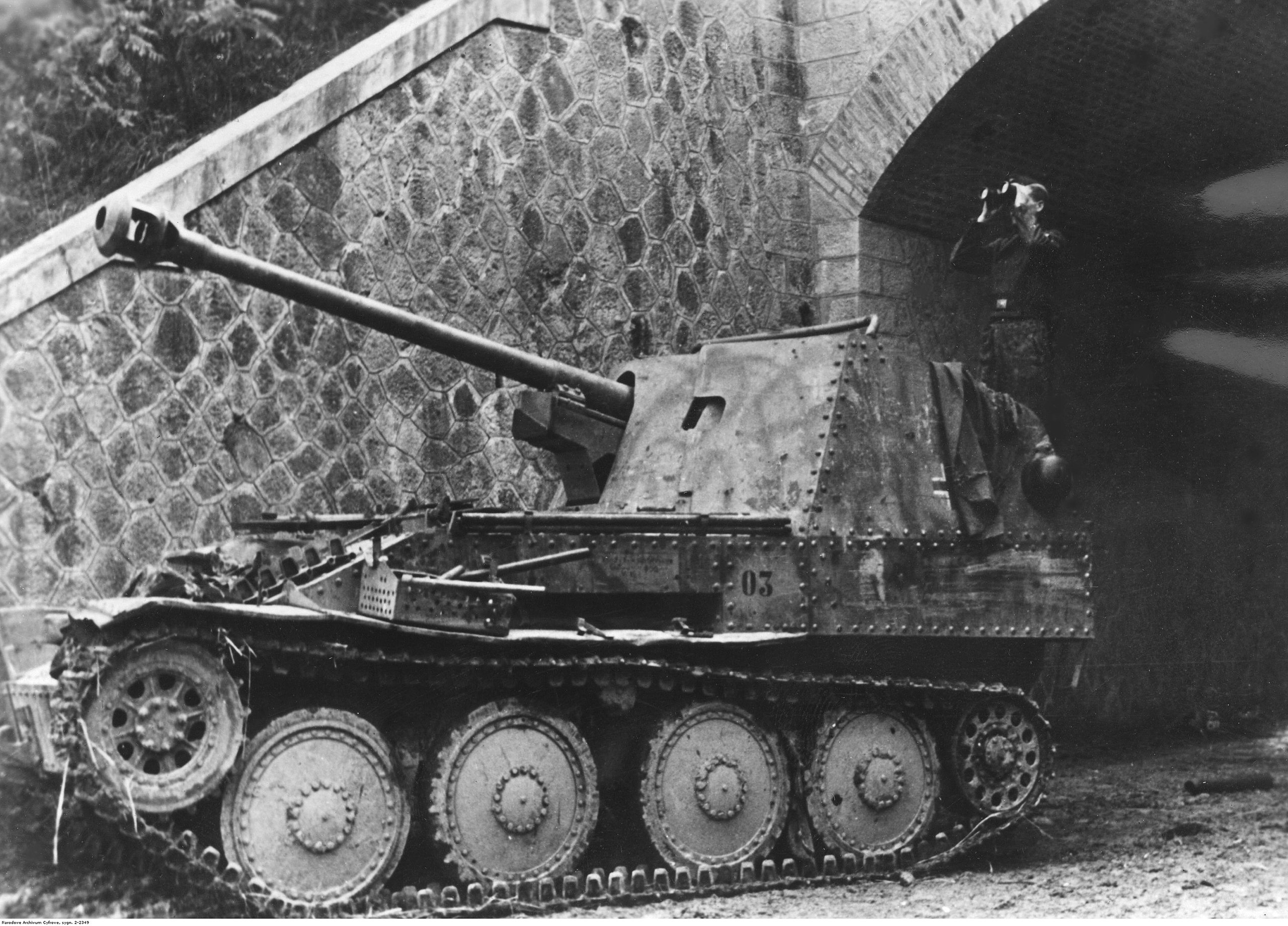 A German Marder III Ausf. 75 mm Pak 40 Self-Propelled Gun in December 1944. (Source: Wydawnictwo Prasowe Kraków-Warszawa, via Wikimedia Commons)
A German Marder III Ausf. 75 mm Pak 40 Self-Propelled Gun in December 1944. (Source: Wydawnictwo Prasowe Kraków-Warszawa, via Wikimedia Commons)
The Germans manned an impressive defensive front in southern Italy, the Gustav Line, and gave ground stubbornly in the Allied campaign. Using the mountainous spine that runs north and south the full length of the Italian peninsula, German forces fought from the advantage of the high ground. An American landing at Anzio turned the Gustav Line after more hard fighting, particularly at Cassino. By June 4, 1944, the Americans captured Rome. But focusing on taking Italy’s capital city also allowed the Germans to escape between the U.S. troops and the British-led forces on the west side of the peninsula.
North of Rome the slugfest continued. The Germans skillfully employed delaying actions as they withdrew north. The Allies were able to establish a major air complex at Foggia, Italy, which brought fighter support closer to the front. Allied bombers continued to disrupt German supply and also strategically bombed German resources north of Italy. Partisan operations also contributed to Allied success.
Among the issues hampering German defenses were deliberately poor quality concrete turned out by Italian mills as well as sabotage by Italians pressed into service as slave laborers.
With the Normandy breakout accomplished, the Italian front became, in Marshall’s words, “an expensive sideshow.” Expensive indeed, as the Germans continued to stymie a rapid advance with well-fortified, experienced troops. The Allied armies, already losing divisions to the Operation Dragoon invasion of the French Riviera, endured more draining of resources to the northern European front. By September and October, the British Eighth and the American Fifth armies, trying to advance up the peninsula past Florence in the Northern Apennines, were stopped at the German Gothic Line. They did push into some of the valleys beyond but by the end of 1944, mud, rain, and snow along with the enemy stopped the advance short of Bologna and the Po Valley, the Allies’ last strategic objective in Italy.
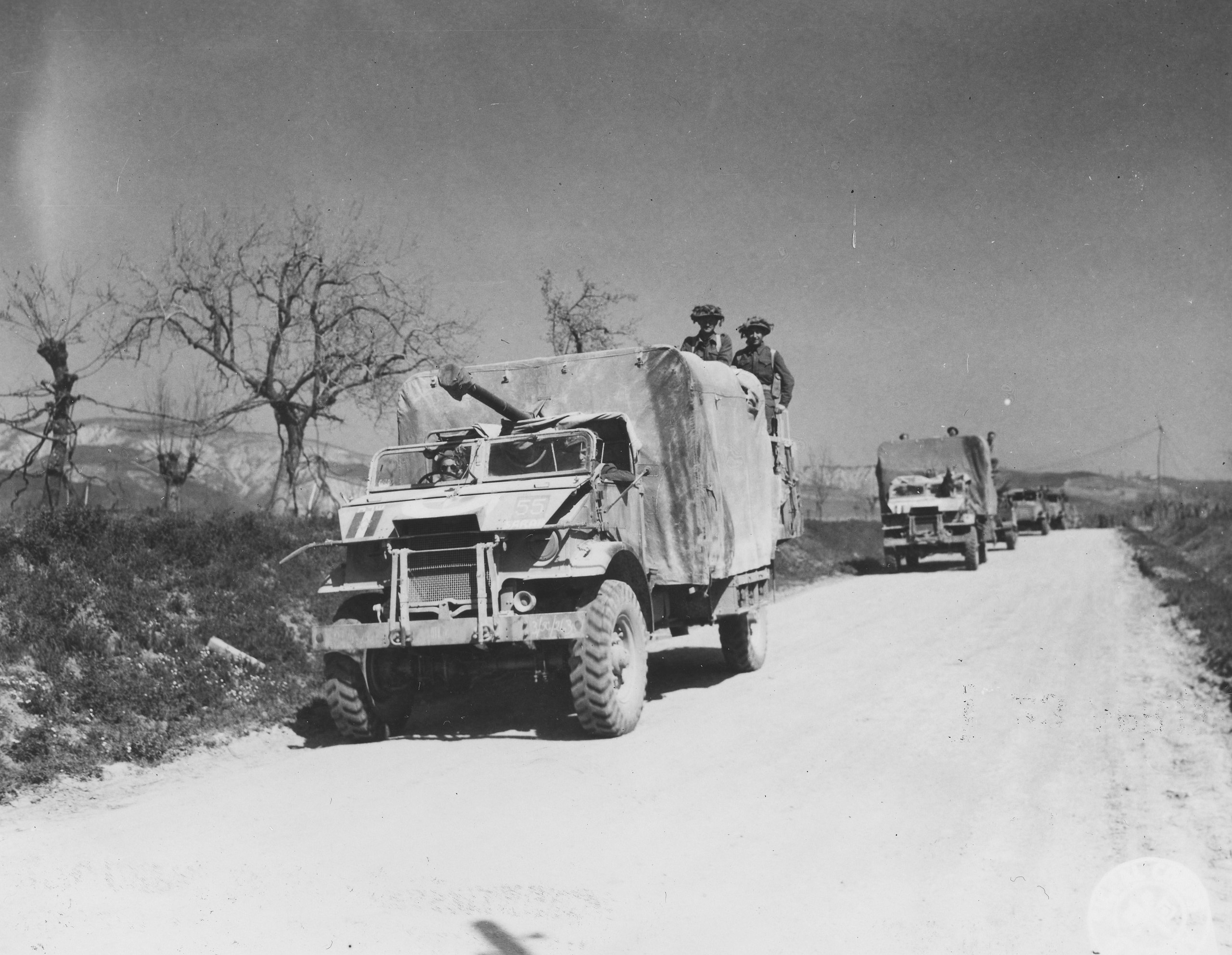 Infantry of the Jewish Brigade, attached to the British Eighth Army, advances through Northern Italy on March 28, 1945. (Source: National Archives and Records Administration, via Wikimedia Commons)
Infantry of the Jewish Brigade, attached to the British Eighth Army, advances through Northern Italy on March 28, 1945. (Source: National Archives and Records Administration, via Wikimedia Commons)
Command changes also occurred during this period. Field Marshal Kesselring, after being seriously injured in a traffic accident, was replaced in leading Army Group C by General Heinrich von Vietinghoff. When Field Marshal Alexander was appointed to command all forces in the Mediterranean, he was replaced by General Clark, who became 15th Army Group commander. Lieutenant General Lucian K. Truscott Jr. was named to head the Fifth Army. Lieutenant General Oliver Leese, head of the British Eighth Army after Montgomery went to France, quarreled openly with Clark. By year’s end, he was reassigned to Southeast Asia and replaced by the more amenable General Sir Richard L. McCreery.
The Germans had several mountain divisions, called Gebirgsjäger, on the line in Italy. They were very experienced in winter fighting. In January, the American 10th Mountain Division arrived in theater. Trained at Fort Hale in Colorado, the division’s roots came even before war was declared at the urging of the U.S. Ski Patrol’s leader. (One of the 10th’s second lieutenants was a young college-educated Kansas native and future candidate for U.S. president, Bob Dole.) An expeditionary force from Brazil also arrived.
Already on the line in the Fifth Army was the first division of African American soldiers, the 92nd Infantry Division, as well as the 442nd Regiment, made up of Nisei (first generation Japanese-American) volunteers. Many of the Nisei soldiers’ families were enduring the war in America’s concentration camps at Manzanar, California, and elsewhere. The sons were determined to prove their valor and patriotism and did so, performing many heroic acts. These units made the Fifth Army the most diverse of America’s World War II armies.
Last Days of the War in Italy
After resting and refitting for most of the winter months, General Clark ordered the Allied forces to resume offensive operations in April, with the American units spearheading the assault. The campaign began with massive aerial and artillery bombardment and an April 5 diversion on the western coastal region by the 92nd Infantry, assisted by the 442nd RCT. The 92nd bogged down in fighting before Massa, but the 442nd scaled the inland mountains and secured the city by April 11.
The British Eighth Army assault on the German Tenth Army began on April 9 along the Adriatic Coast. Though delayed a few days by bad flying weather, on April 14, the main effort by the two corps of Truscott’s force drove the German Fourteenth Army toward Bologna in the center. Over the next ten days, all the Allied forces began to break through the German defense line and race toward the flat lands of the Po River in order to both split the German armies and prevent the destruction of the Po River bridges. In this they were generally successful.
 Members of Company K, 87th Mountain Infantry, 10th Mountain Division in Sassomolare area, Italy. (Source: U. S. Army Center for Military History, via Wikimedia Commons)
Members of Company K, 87th Mountain Infantry, 10th Mountain Division in Sassomolare area, Italy. (Source: U. S. Army Center for Military History, via Wikimedia Commons)
Allied forces fanned out across the Po River to seal any access the Germans had to escape routes into the Alps. The fast-moving armored columns beat the Germans to their last line of defense along the Adige River. The 10th Mountain Division took Verona and sealed the Brenner Pass escape route across the Alps. The British took Venice and blocked all escape routes to the east. The 92nd Infantry Division and the 442nd Regiment broke up the small German Ligurian Army, captured Genoa, and united with Italian partisans along the border with France. The U.S. 1st Armored Division captured Milan, the largest Italian city in the north.
Italian partisans captured Benito Mussolini hiding near Lake Como and executed him. American GIs entering Milan witnessed his body hanging from his heels in a city plaza.
Long before the April offensive began, Allen Dulles of the U. S. Office of Strategic Services met secretly with German emissaries in Bern, Switzerland. The Germans hoped to negotiate peace in Italy in exchange for the help of the Western Allies in staving off the Soviet invasion of Germany. The success of the April offensive eliminated any bargaining power the Germans had in accomplishing this forlorn objective.
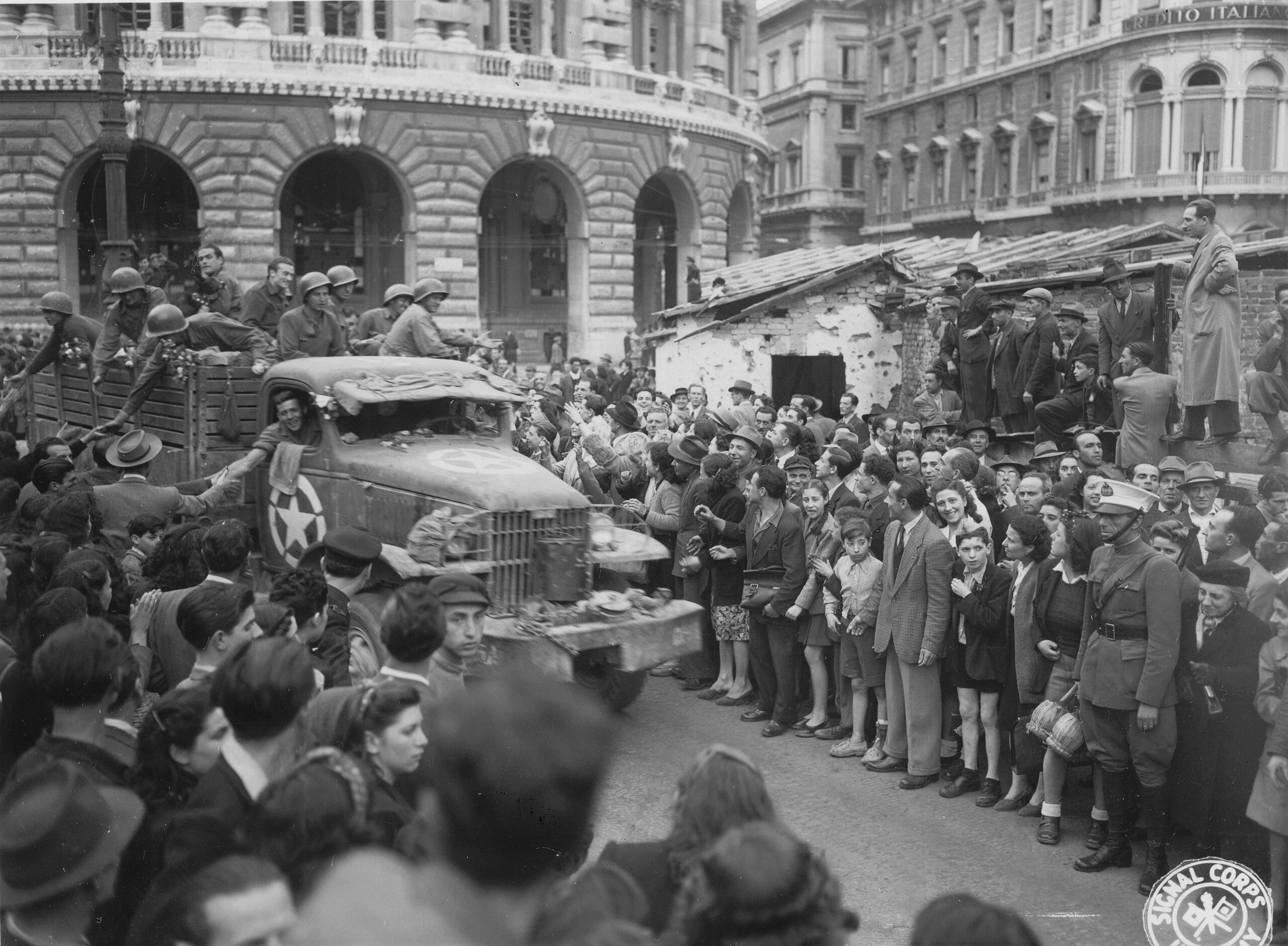 American soldiers are greeted by civilians in Genoa. 27 April 1945. (Source: National Archives and Records Administration, via Wikimedia Commons)
American soldiers are greeted by civilians in Genoa. 27 April 1945. (Source: National Archives and Records Administration, via Wikimedia Commons)
Well over 100,000 German prisoners were taken by the multinational Allied force in the fighting. A ceasefire was arranged on April 28 and, on May 2, General von Vietinghoff surrendered his armies, turning many more Germans into POWs. The Fifth U.S. Army served longer in campaigning than any other American army, fighting continuously alongside forces from the U.K. and many other Allied nations. Though friction, jealousy, and strategic differences were common among military and political leaders of the campaign, the fighting men of the Allied armies achieved total capitulation of the enemy.
Ω
Jay Wertz is an award-winning author, publisher, and filmmaker. He has written seven books, including four volumes in the War Stories: World War II Firsthand™ series. Other books include The Native American Experience; The Civil War Experience 1861–1865; and Smithsonian’s Great Battles and Battlefields of the Civil War, co-authored with Edwin C. Bearss. He is the editor and a primary contributor to D-Day 75th Anniversary – A Millennials Guide and other works for Monroe Publications. He has been a columnist and online contributor for Civil War Times Illustrated, America’s Civil War, Aviation History, Armchair General, and America in WWII magazines. He is also the producer-director-writer of the documentary series Smithsonian’s Great Battles of the Civil War for The Learning Channel and Time-Life Video.
Title Image: An out-of-action German Tiger I tank in a ditch is passed by a U.S. Army 6x6 truck north of Rome, mid 1944. (Source: Imperial War Museum, via Wikimedia Commons)

